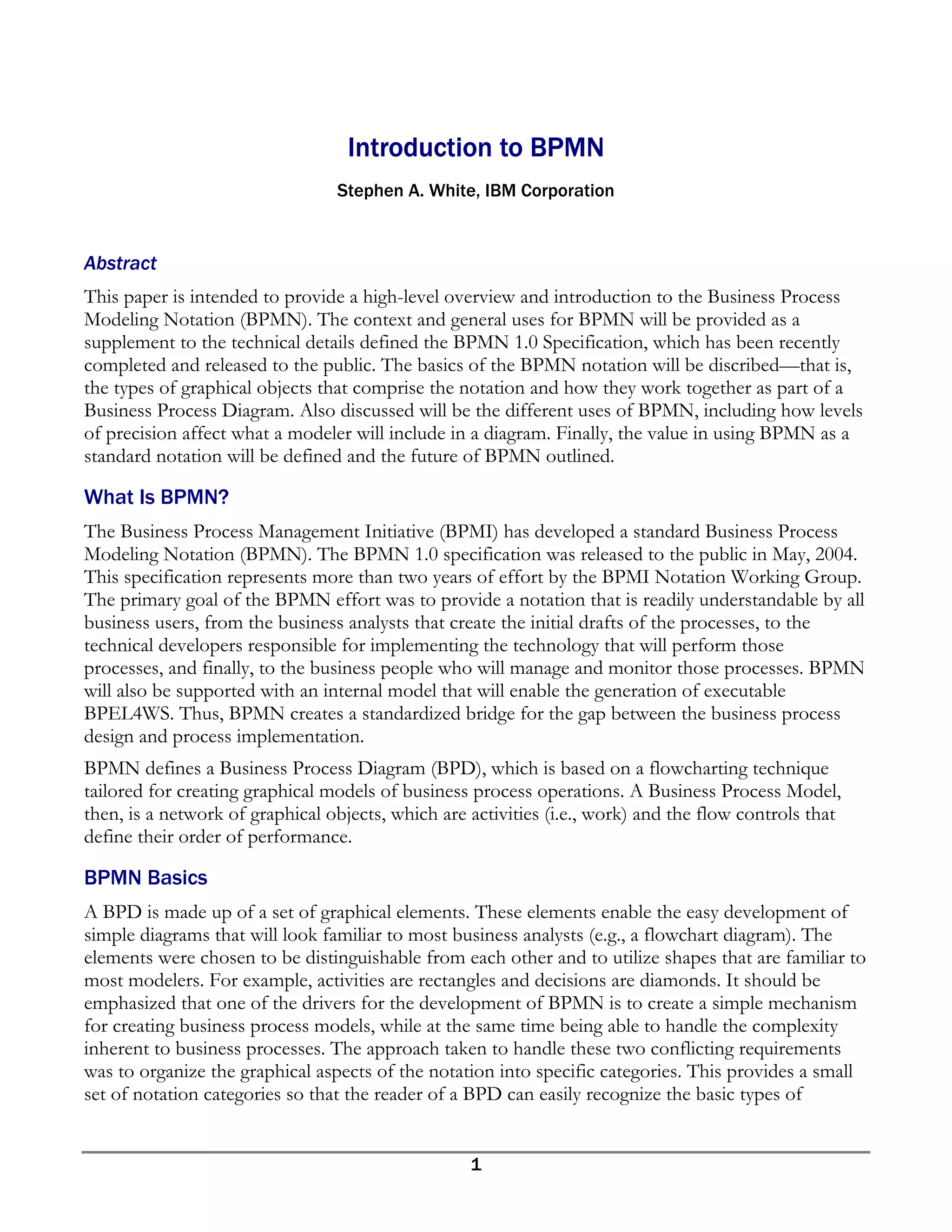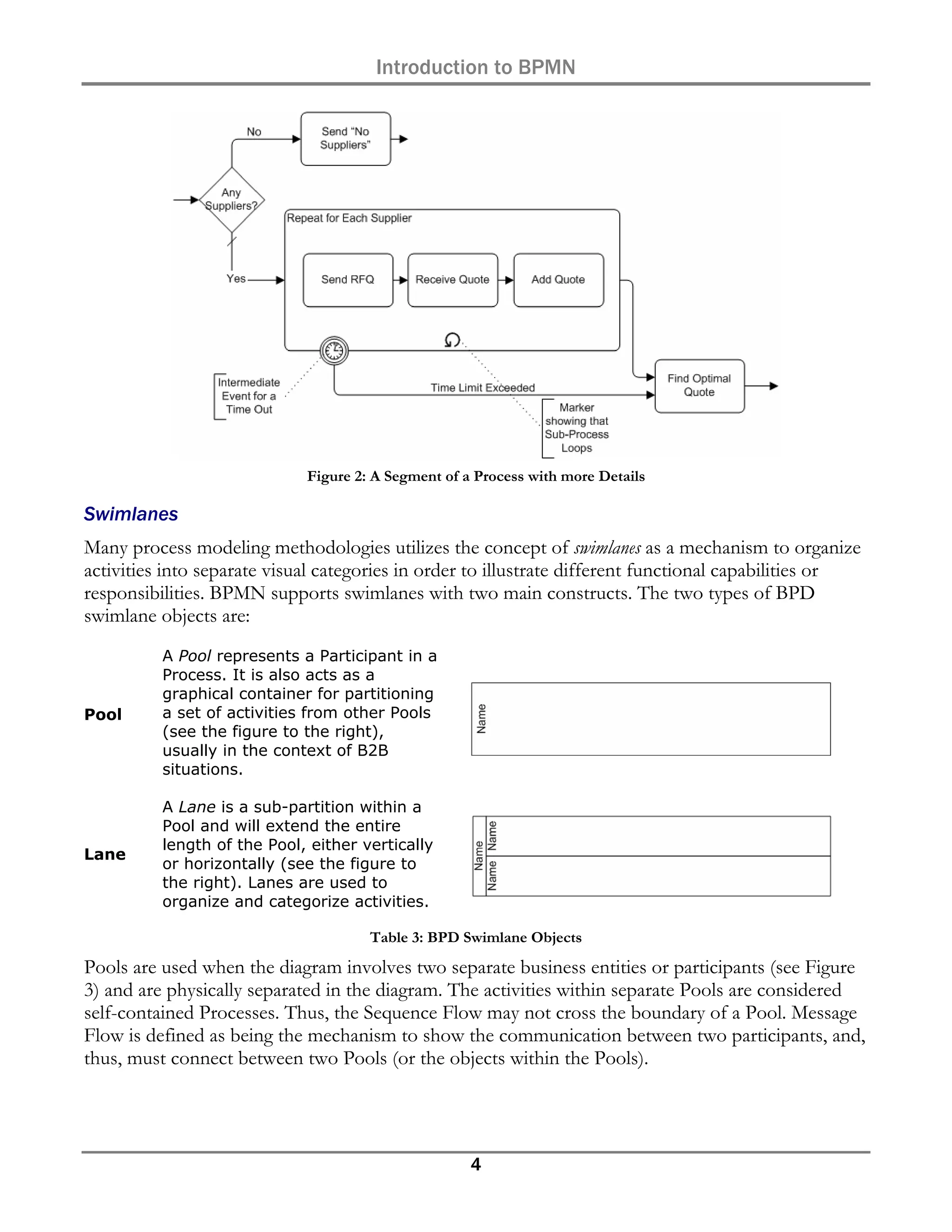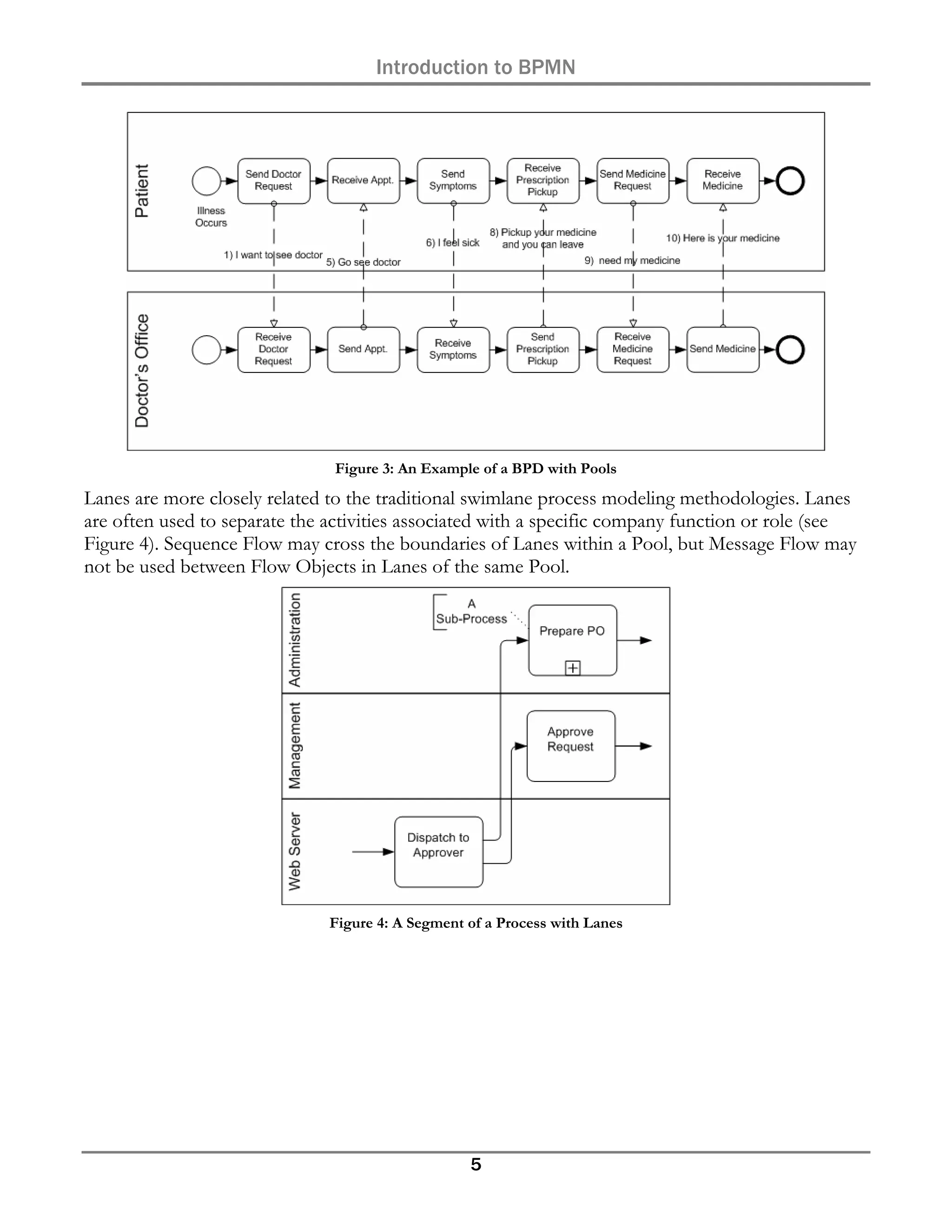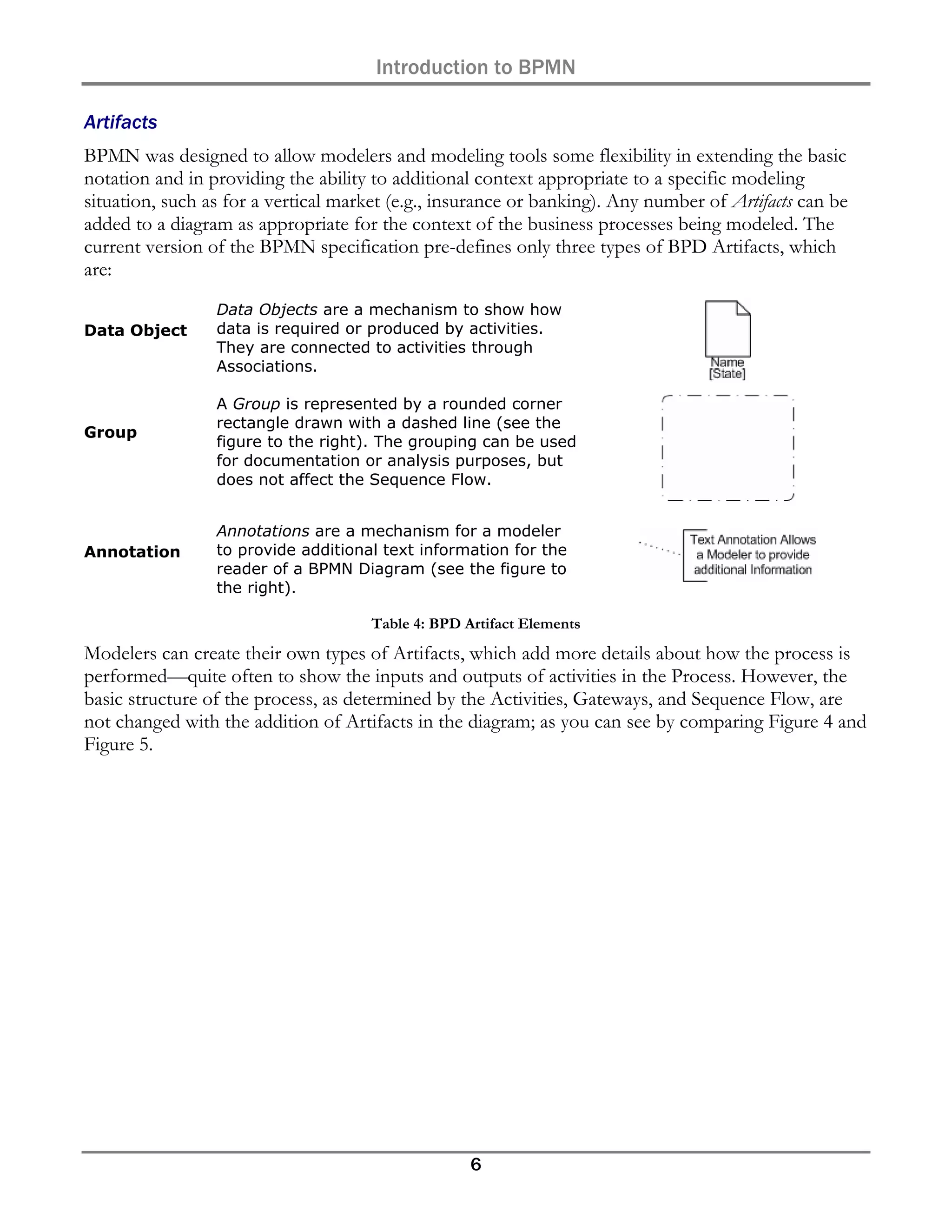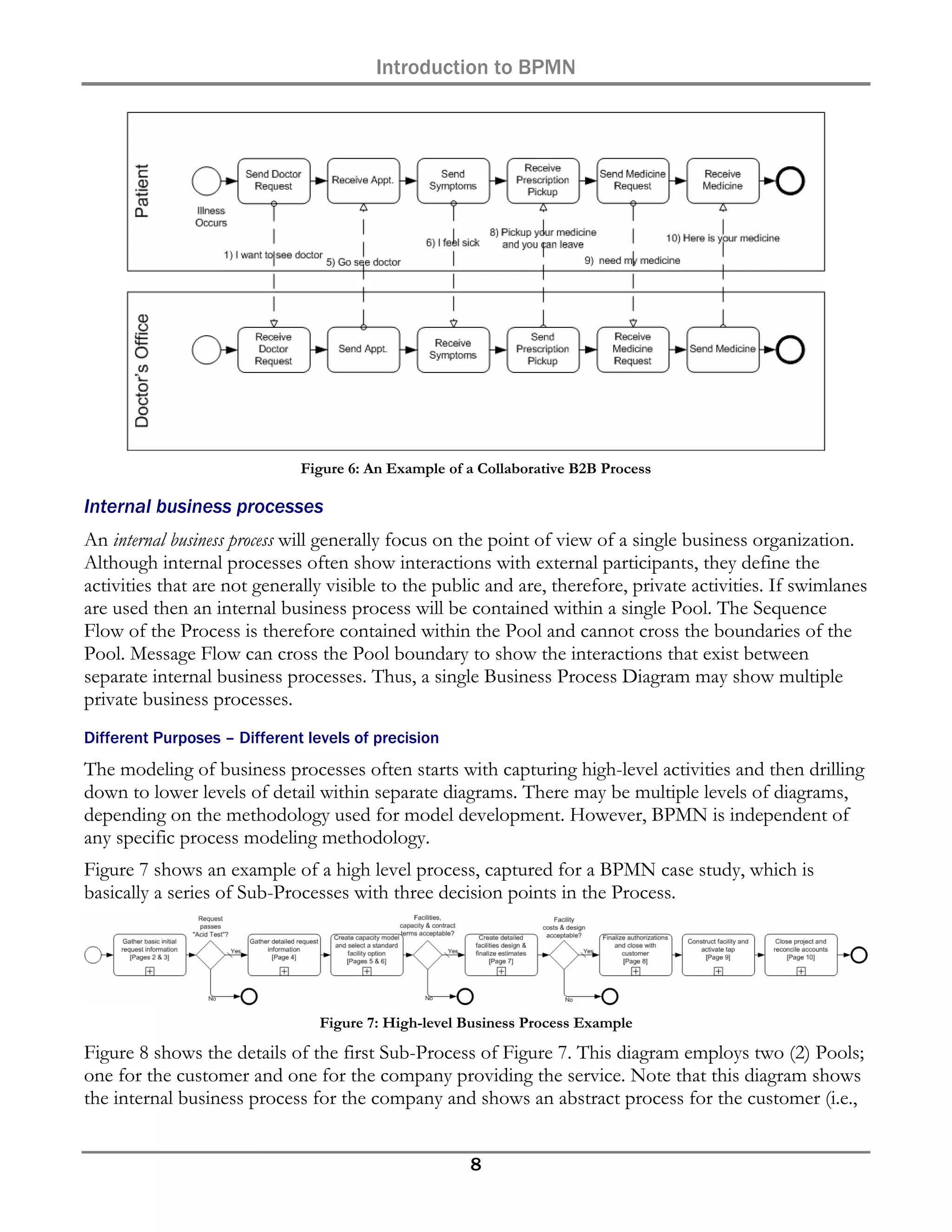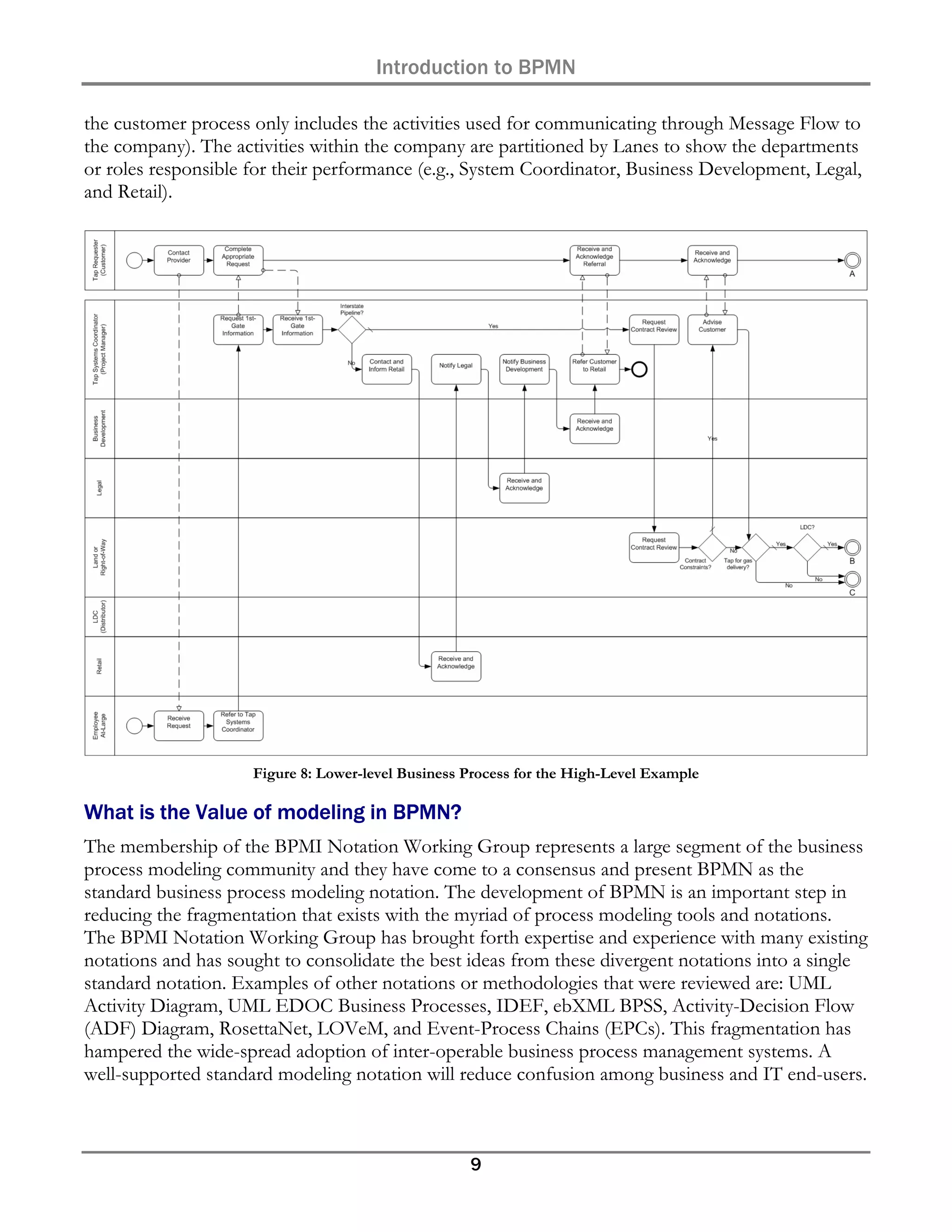The document provides an introduction and overview of the Business Process Modeling Notation (BPMN). It discusses that BPMN was created to provide a standard notation that is understandable by all business users. BPMN defines graphical elements to develop simple diagrams that look like flowcharts. It categorizes the elements into flow objects, connecting objects, swimlanes, and artifacts. Flow objects include events, activities, and gateways. Connecting objects are sequence flows, message flows, and associations. Swimlanes separate activities using pools and lanes. BPMN aims to balance simplicity with the ability to model complex business processes.
